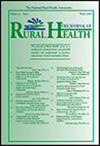Critical access hospitals: Lessons from the Frontier Community Health Integration Project
Abstract
Purpose
In 2016, the Centers for Medicare & Medicaid Services implemented the Frontier Community Health Integration Project (FCHIP) to test the impact of a Medicare payment change for telehealth and ambulance services and a policy change for skilled nursing facility (SNF) beds for critical access hospitals (CAHs) treating Medicare fee-for-service patients in frontier regions. We evaluated the impact of FCHIP on ambulance, SNF, and telehealth service delivery.
Methods
We conducted a primarily qualitative evaluation, with some descriptive analyses, of 10 CAHs in Montana, Nevada, and North Dakota that participated in FCHIP. Key informant interviews and program documents were thematically analyzed to understand how CAHs implemented their interventions. Analyses of Medicare fee-for-service ambulance, SNF, and telehealth claims from August 2013 through July 2019 described service use over time at participating CAHs.
Findings
CAHs used the demonstration to develop their workforce, even when staff turnover was a primary concern, and the demonstration gave CAHs a reason to change care delivery and improve partnerships with other hospitals or specialists treating their patients. Technical assistance supported CAHs in transforming care. CAH staff reported that FCHIP payment and policy changes had little impact on hospital finances. Changes in service use over time varied by FCHIP service.
Conclusion
Despite notable challenges like staffing shortages, CAHs remain committed to meeting community need by making improvements in care delivery. With low population volume and thus minimal demand for certain services, expectations that volume-based payment policies can financially bolster CAHs may need to be tempered.

 求助内容:
求助内容: 应助结果提醒方式:
应助结果提醒方式:


